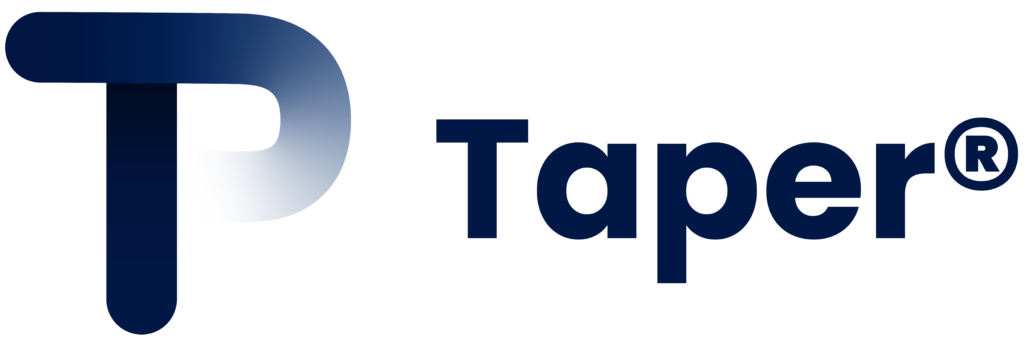Supply chain finance offers flexible, relationship-based funding tied to specific transactions and supplier networks, while bank credit lines provide traditional revolving credit based on your company’s creditworthiness and collateral. Supply chain finance typically features faster approval, lower rates for established trade relationships, and payment terms linked to invoice cycles, whereas bank credit lines offer broader usage flexibility but require more stringent qualification criteria and longer approval processes.
Understanding supply chain finance and traditional bank credit lines
Both supply chain finance and traditional bank credit lines serve as vital working capital solutions for businesses engaged in international trade. However, they operate on fundamentally different principles and serve distinct business needs.
Supply chain finance leverages the strength of established buyer-supplier relationships to provide funding. This approach recognises that creditworthy buyers can help their suppliers access better financing terms, creating a win-win scenario that strengthens the entire supply chain.
Traditional bank credit lines, conversely, focus primarily on your company’s individual financial standing. Banks evaluate your credit history, assets, and cash flow to determine lending terms, regardless of your trading relationships or specific transaction details.
For businesses operating internationally, understanding these differences proves particularly important. International trade often involves extended payment cycles, currency fluctuations, and complex documentation requirements that can strain working capital. The right financing choice can significantly impact your ability to fulfil orders, maintain supplier relationships, and capture growth opportunities.
What is supply chain finance and how does it work?
Supply chain finance creates funding opportunities by connecting suppliers, buyers, and financial institutions in a collaborative ecosystem. Rather than evaluating each supplier independently, financiers assess the creditworthiness of the entire supply chain, often anchored by a strong buyer.
The process typically begins when you deliver goods or services and issue an invoice to your buyer. Instead of waiting 30, 60, or 90 days for payment, you can access immediate funding based on that approved invoice. The financing provider pays you promptly, then collects from your buyer according to the original payment terms.
This mechanism works particularly well for international trade because it addresses several common challenges:
- Extended payment cycles that strain working capital
- Currency exposure during lengthy payment periods
- The need for immediate funds to fulfil new orders
- Difficulty accessing traditional credit due to limited local credit history
Many supply chain finance programmes also incorporate technology platforms that streamline invoice processing, approval workflows, and payment tracking. This digital approach reduces administrative overhead while providing transparency for all parties involved.
How do bank credit lines differ from supply chain finance solutions?
Traditional bank credit lines operate as revolving credit facilities where you can borrow up to a predetermined limit, repay the funds, and borrow again as needed. The application process typically requires extensive financial documentation, collateral assessment, and credit evaluation focused solely on your business.
| Aspect | Supply Chain Finance | Bank Credit Lines |
|---|---|---|
| Application Process | Simplified, often digital application focusing on buyer creditworthiness | Comprehensive financial review, extensive documentation required |
| Approval Timeline | Days to weeks | Weeks to months |
| Collateral Requirements | Typically unsecured, backed by invoice/purchase order | Often requires business assets, personal guarantees |
| Interest Structure | Fixed discount rate per transaction | Variable interest rate on outstanding balance |
| Usage Flexibility | Limited to approved invoices/transactions | General business purposes |
The fundamental difference lies in risk assessment. Banks evaluate your company’s ability to repay based on historical performance and assets. Supply chain finance providers focus on the underlying transaction and the buyer’s payment reliability.
For SMEs in international trade, this distinction often determines accessibility. Many growing businesses with strong customer relationships but limited collateral find supply chain finance more attainable than traditional bank credit.
Which financing option is better for international trade businesses?
The optimal choice depends on your specific business model, customer base, and growth stage. Supply chain finance typically suits businesses with established buyer relationships, predictable order patterns, and immediate working capital needs tied to specific transactions.
Consider supply chain finance when you:
- Work with creditworthy buyers who approve invoices promptly
- Face extended payment cycles that strain cash flow
- Need funding for specific orders or inventory purchases
- Lack sufficient collateral for traditional bank lending
- Require quick access to working capital
Bank credit lines work better for businesses needing flexible funding for various purposes beyond specific transactions. This option suits companies with strong financial statements, diverse funding needs, and the ability to meet traditional lending criteria.
Choose bank credit lines when you:
- Need funding flexibility for multiple business purposes
- Have strong financial statements and available collateral
- Prefer predictable, ongoing credit availability
- Can qualify for competitive traditional lending rates
- Want to build long-term banking relationships
Many successful international businesses use both options strategically, employing supply chain finance for transaction-specific needs while maintaining bank credit lines for general working capital and unexpected opportunities.
Key takeaways for choosing the right financing solution
Your financing decision should align with your business model, growth plans, and operational requirements. Supply chain finance excels at solving immediate cash flow challenges tied to specific customer relationships, while bank credit lines provide broader financial flexibility.
Consider these factors when evaluating your options:
- Speed of access: Supply chain finance typically offers faster approval and funding
- Cost structure: Compare transaction-based fees versus ongoing interest charges
- Qualification requirements: Assess your ability to meet each option’s criteria
- Usage flexibility: Determine whether you need transaction-specific or general-purpose funding
- Scalability: Consider how each option supports your growth plans
The international trade finance landscape continues evolving, with many providers now offering hybrid solutions that combine elements of both approaches. As your business grows, regularly reassessing your financing mix ensures you maintain optimal working capital support.
At Taper, we understand that international businesses need flexible, efficient financing solutions that adapt to their unique challenges. Our comprehensive approach to trade finance and international payments helps you focus on growing your business while we handle the financial complexities.
Frequently Asked Questions
Can I use supply chain finance if my buyers are small businesses or startups?
Supply chain finance works best when your buyers have strong credit profiles that financiers can evaluate. If your buyers are small businesses or startups without established credit histories, you may face higher costs or limited availability. Consider focusing on your largest, most creditworthy customers first, or explore alternative programs designed specifically for SME buyer networks.
What happens if my buyer disputes an invoice after I've already received supply chain financing?
Most supply chain finance agreements include recourse provisions, meaning you remain responsible for repayment if the buyer refuses to pay due to disputes. To minimize this risk, ensure your invoicing processes are accurate, maintain clear delivery documentation, and establish dispute resolution procedures with buyers before accessing financing.
How do I get started with supply chain finance if I've never used it before?
Start by identifying your most creditworthy buyers and gathering 6-12 months of transaction history with them. Approach supply chain finance providers with this data, along with sample invoices and payment terms. Many providers offer pilot programs where you can test the service with a few transactions before committing to larger volumes.
Is it possible to negotiate better rates on supply chain finance over time?
Yes, rates often improve as you demonstrate consistent transaction volumes and reliable buyer payment patterns. Providers typically review pricing annually based on your portfolio performance, buyer creditworthiness, and overall relationship strength. Building a track record of successful transactions is key to securing better terms.
What are the hidden costs I should watch out for with each financing option?
For supply chain finance, watch for setup fees, platform usage charges, and early payment penalties. Bank credit lines may include arrangement fees, unused line charges, and foreign exchange spreads for international transactions. Always request a complete fee schedule and calculate the total cost of funds, not just the headline rate.
Can I switch from bank credit lines to supply chain finance without affecting my credit rating?
Switching financing methods generally won't directly impact your credit rating, but closing established credit lines might affect your credit utilization ratios. Consider maintaining existing bank relationships while adding supply chain finance options, then gradually adjusting your mix based on performance and costs.
How do currency fluctuations affect each financing option for international transactions?
Supply chain finance can offer better currency protection since funding is often provided in your invoice currency, reducing exposure during payment periods. Bank credit lines typically require you to manage currency risk separately through hedging instruments. Some supply chain finance providers also offer built-in currency hedging as part of their service.



